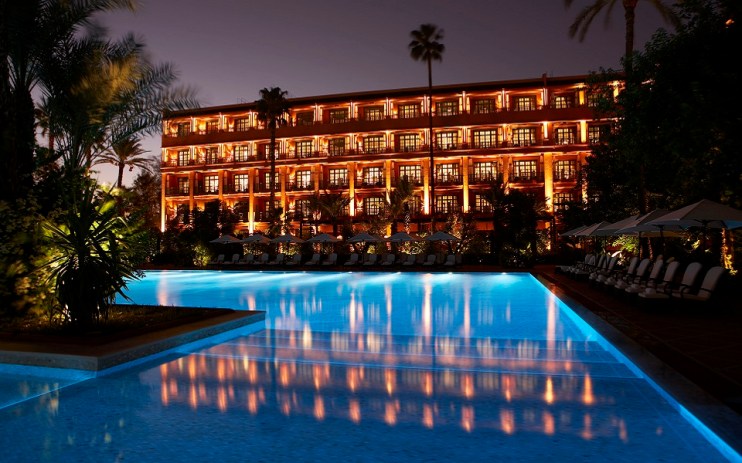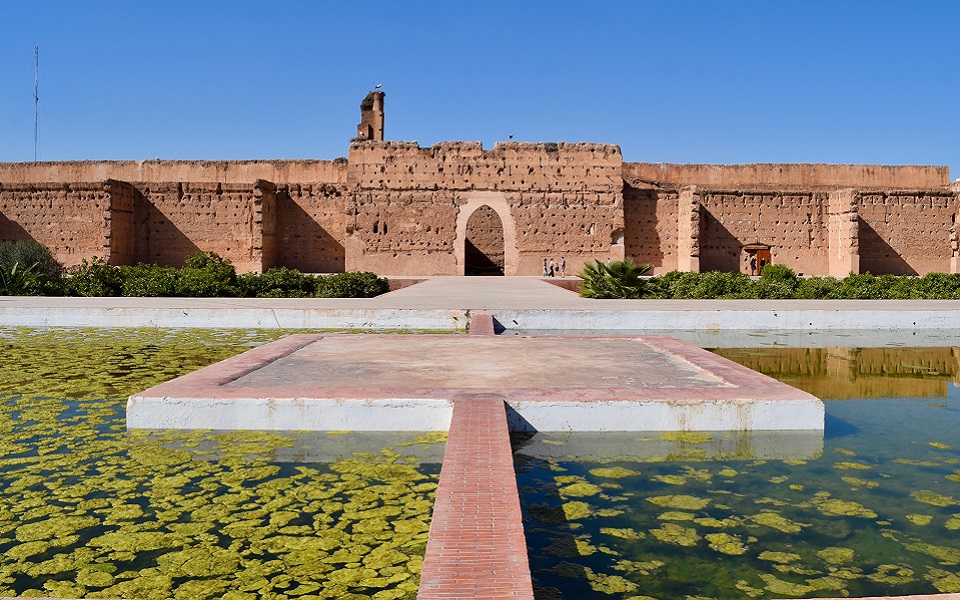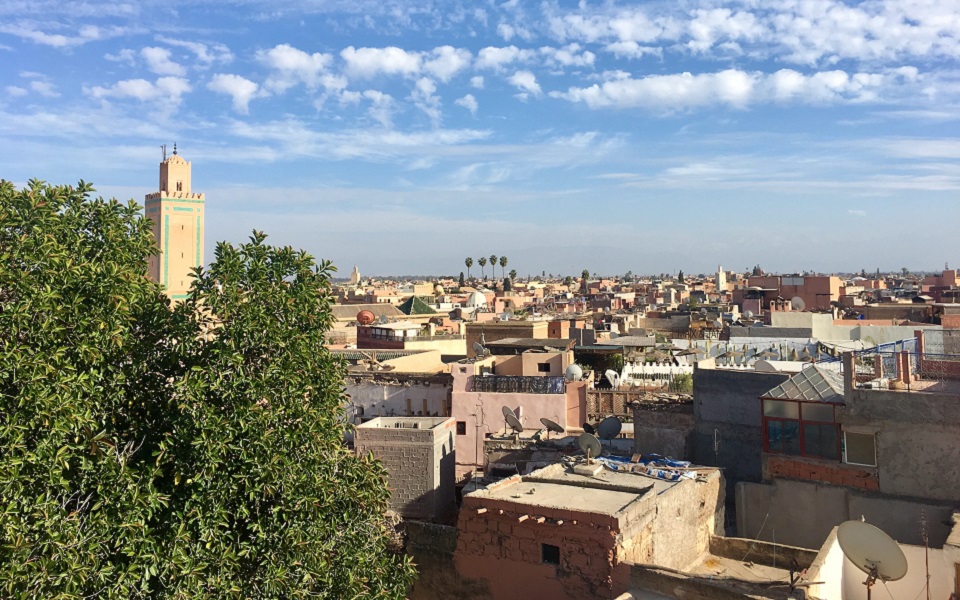Uncovering Churchill’s Marrakech

Asking if Winston Churchill was a hero or a villain oversimplifies the man and the historic events in which he played such controversial — but undoubtedly significant — roles. I knew of him first as a statesman, then as a historian and writer, but only relatively recently discovered that Churchill was an accomplished artist, too. His watercolours of North Africa show not only that this was this a region he returned to again and again, but also that it was a place where he felt relaxed enough to indulge his hobby for days, even weeks, at a time.
The terracotta of the Moroccan desert sands permeates the colour palette of his art, the hazy peaks of the Atlas Mountains a familiar backdrop in his landscapes and thoughtfully depicted scenes of everyday life.
To see firsthand the views which inspired Churchill’s paintings, I travelled to Marrakech, a city he described as “the Paris of the Sahara” and “the loveliest spot in the whole world.” British Airways has a direct route from Gatwick, with a journey time of less than four hours, making it feasible for a long weekend break.
I mused on the flight about the ease of the journey and how times have changed; when Churchill came here on holiday in the autumn of 1943, taking a break after the Casablanca Conference, WWII was at its height. His aircraft of choice was a Boeing flying boat, and when he did have to fly to North Africa in an early, unpressurised airliner, he enquired whether the oxygen mask could be adapted to enable him to continue smoking his cigar.

Churchill’s home from home in Marrakech was La Mamounia, a majestic palace hotel built in royal gardens on the outskirts of the Old Town in 1923. He stayed here almost a dozen times over the years, and invited Franklin D. Roosevelt and Charles de Gaulle to join him at the hotel for a few days of R&R in 1943.
La Mamounia is a place quite unlike anywhere else in the dusty, medieval city: the gardens are a verdant green, the fountains sparkle, and the mosaic tiles are like jewels. The vibrancy of the colours here no doubt were part of the allure for Churchill, as when writing about his pastime of painting he declared, “I must say I like bright colours…I rejoice with brilliant ones, and am genuinely sorry for the poor brown ones.”
Whenever he stayed at La Mamounia, Churchill always requested the same set of rooms looking over the gardens so he could paint them. The Churchill Suite — which still has his name inscribed in Arabic above the bed — is in high demand and was, alas, occupied during my stay.
I checked in instead to a Hivernage Suite, the balcony of which has the same, tranquil view of the palm trees. In the early evening the birds were decidedly vocal, and it came as no surprise when I was told that their tendency to fly uninvited into guest rooms was what sparked Alfred Hitchcock — another famous fan of La Mamounia — to produce The Birds.
As the sky darkened, the sound of the birds gave way to the mesmerising rumble of the Muezzin’s call, carried across the city rooftops on the breeze. It is a sound often described as “haunting”, but I think only in the sense that it reminds you of the uncountable generations of men who have climbed five times a day to the top of the minaret to deliver the call to prayer. Each muezzin walks in the footsteps of his ancestors, and for nearly a thousand years his call has been inextricable from the soundscape of the city.

It’s tempting to stay within La Mamounia’s hallowed walls, but now as in the 1940s, the Medina has an unquestionable allure. I walked the short distance into town, a succession of horse drawn carriages overtaking me on the way.
The central square, Jemaa el Fnaa, is still packed with story tellers, musicians, and dancers, and they jostle for space with juice sellers and street cafes. The smell of grilled meats flavoured with spices wafts in the air, mingling occasionally with the scent of rose water or orange. Street cats dart about beneath the tables, hoping to snatch a morsel of kebab or tagine, and given their well fed appearance, I can surmise that they’re lucky more often than not.
There was quite a party atmosphere here: 3,000 berber women had descended on Marrakech for the weekend to sell their wares at the bi-monthly wholesale market. I have no space at the moment for a 12’ killim or a set of hand painted plates, but if I did, this is where I’d come to choose them. The leatherwork is pungent, untreated, but the bright coloured slippers and bags caught my eye, as did the stalls piled high with dried rose buds, spices, and argan nuts, which are pressed for oil.
In the labyrinthine alleyways of the Medina I twisted and turned, attempting to follow the map for the first 10 minutes or so, then finally giving in to fate I headed vaguely east, reassuring myself regularly that I was not lost but rather exploring.
A glass of fresh pomegranate juice and several piping hot pastries helped me on my way, and eventually I popped out into a wider street with visible sky.
I was searching for the Kasbah Mosque, built in the late 12th century and one of the city’s most important religious sites. Churchill captured both its architecture and the colourful costumes of worshippers approaching its gates in Mosque at Marrakech (1948), which is now in the National Trust collection at Chartwell, Churchill’s British home for forty years. The mosque’s cubic minaret is visible long before the mosque itself. The green-blue tilework on the tower is quite distinctive, standing out against the coral coloured brickwork.
I walked up from the opposite side of the plaza to where Churchill must have set up his easel, turned, and immediately recognised the sight. A low rise, whitewashed building has been demolished, and a road put through, but the scene is nevertheless unmistakable.
Mosque at Marrakech was actually the second painting Churchill had done of the Kasbah. The first – which he gave Roosevelt as a gift after their visit to Marrakech in 1943 – is the only painting he made in the war years. Entitled The Tower of Katoubia Mosque, it was owned, believe it or not, by Angelina Jolie and Brad Pitt. (Jolie sold it recently for £7m.) What dominates this painting is not the titular tower, but rather the imposing city walls, besides which I walked back to the hotel.
At La Mamounia, keen for a sit down and a drink, the obvious place to relax was Le Churchill, an opulent bar with leather walls, a leopard print carpet, and the slight fug of cigar smoke. I sipped on a Sir Winston Churchill; it’s a blend of Tanqueray gin and Champagne of which I’m sure the wartime leader would have approved.
Do it yourself
British Airways flies to Marrakech from £110 return including taxes and fees. Rooms at La Mamounia begin at around £400 based on two people sharing a Classic Twin Room. And check our guide to 48 hours in Marrakech for more inspiration